A Novel Lineage of Endosymbiotic Actinomycetales: Genome Reduction and Acquisition of New Functions in Bifidobacteriaceae Associated With Termite Gut Flagellates
- PMID: 39778056
- PMCID: PMC11707648
- DOI: 10.1111/1462-2920.70010
A Novel Lineage of Endosymbiotic Actinomycetales: Genome Reduction and Acquisition of New Functions in Bifidobacteriaceae Associated With Termite Gut Flagellates
Abstract
Cellulolytic flagellates are essential for the symbiotic digestion of lignocellulose in the gut of lower termites. Most species are associated with host-specific consortia of bacterial symbionts from various phyla. 16S rRNA-based diversity studies and taxon-specific fluorescence in situ hybridization revealed a termite-specific clade of Actinomycetales that colonise the cytoplasm of Trichonympha spp. and other gut flagellates, representing the only known case of intracellular Actinomycetota in protists. Comparative analysis of eleven metagenome-assembled genomes from lower termites allowed us to describe them as new genera of Bifidobacteriaceae. Like the previously investigated Candidatus Ancillula trichonymphae, they ferment sugars via the bifidobacterium shunt but, unlike their free-living relatives, experienced significant genome erosion. Additionally, they acquired new functions by horizontal gene transfer from other gut bacteria, including the capacity to produce hydrogen. Members of the genus Ancillula (average genome size 1.56 ± 0.2 Mbp) retained most pathways for the synthesis of amino acids, including a threonine/serine exporter, providing concrete evidence for the basis of the mutualistic relationship with their host. By contrast, Opitulatrix species (1.23 ± 0.1 Mbp) lost most of their biosynthetic capacities, indicating that an originally mutualistic symbiosis is on the decline.
Keywords: bifidobacteria; flagellates endosymbiosis; genome reduction; gut microbiota; horizontal gene transfer; termites.
© 2025 The Author(s). Environmental Microbiology published by John Wiley & Sons Ltd.
Conflict of interest statement
The authors declare no conflicts of interest.
Figures







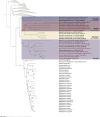
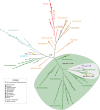
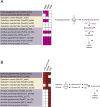


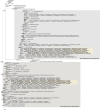
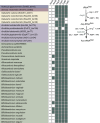

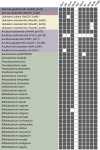



Similar articles
-
Genome reduction and horizontal gene transfer in the evolution of Endomicrobia-rise and fall of an intracellular symbiosis with termite gut flagellates.mBio. 2024 Jun 12;15(6):e0082624. doi: 10.1128/mbio.00826-24. Epub 2024 May 14. mBio. 2024. PMID: 38742878 Free PMC article.
-
'Candidatus Ancillula trichonymphae', a novel lineage of endosymbiotic Actinobacteria in termite gut flagellates of the genus Trichonympha.Environ Microbiol. 2012 Dec;14(12):3259-70. doi: 10.1111/1462-2920.12012. Epub 2012 Nov 1. Environ Microbiol. 2012. PMID: 23116209
-
Cospeciation of termite gut flagellates and their bacterial endosymbionts: Trichonympha species and 'Candidatus Endomicrobium trichonymphae'.Mol Ecol. 2009 Jan;18(2):332-42. doi: 10.1111/j.1365-294X.2008.04029.x. Mol Ecol. 2009. PMID: 19192183
-
[Diversity and function of symbiotic microbes in the gut of lower termites].Wei Sheng Wu Xue Bao. 2006 Jun;46(3):496-9. Wei Sheng Wu Xue Bao. 2006. PMID: 16933630 Review. Chinese.
-
Diversity and genomes of uncultured microbial symbionts in the termite gut.Biosci Biotechnol Biochem. 2010;74(6):1145-51. doi: 10.1271/bbb.100094. Epub 2010 Jun 7. Biosci Biotechnol Biochem. 2010. PMID: 20530908 Review.
Cited by
-
Notification of changes in taxonomic opinion previously published outside the IJSEM. List of Changes in Taxonomic Opinion no. 42.Int J Syst Evol Microbiol. 2025 Jul;75(7):006793. doi: 10.1099/ijsem.0.006793. Int J Syst Evol Microbiol. 2025. PMID: 40742387 Free PMC article. No abstract available.
References
-
- Biavati, B. 2015. “Bifidobacteriaceae.” In Bergey's Manual of Systematics of Archaea and Bacteria, 1–2. Ltd: John Wiley & Sons. 10.1002/9781118960608.fbm00008. - DOI
MeSH terms
Substances
Grants and funding
LinkOut - more resources
Full Text Sources
Miscellaneous

